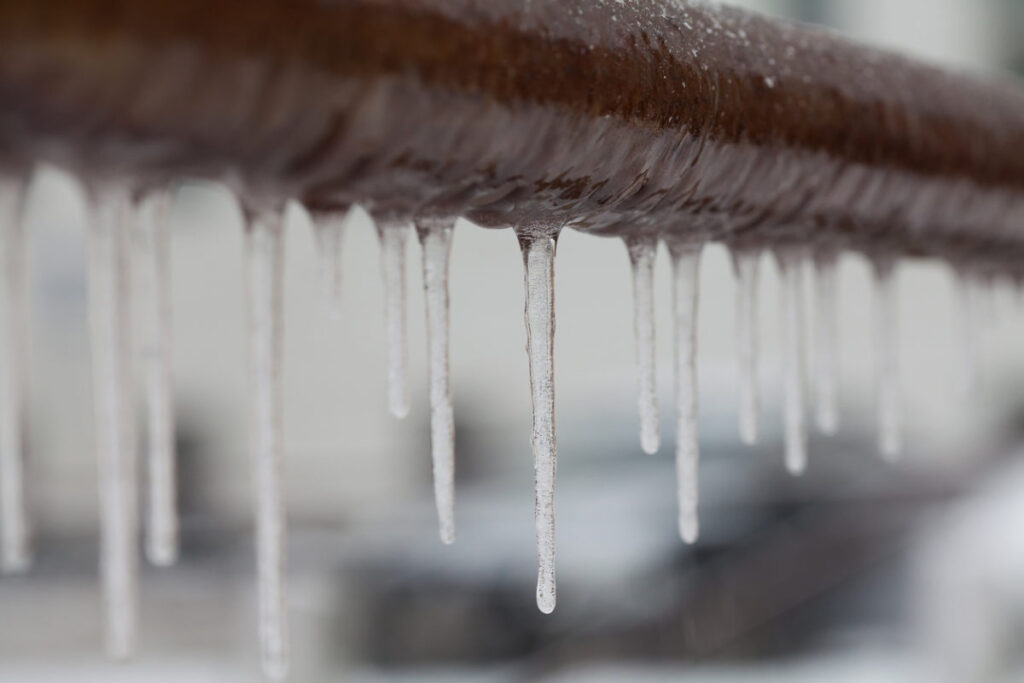4 Ways To Prevent Your Pipes From Freezing

The winter weather might bring a welcome relief from North Carolina’s balmy, brutal summer season; however, the cold can also increase your risk of frozen pipes. Frozen pipes aren’t just a minor inconvenience — they’re extremely disruptive, often resulting in extensive water damage when they burst. The good news is this issue can be easily avoided with some careful preparation.
In this blog post, the plumbing experts at Roby Services share four top tips for preventing your pipes from freezing during the winter weather and keeping your plumbing system safe and functional all season long.
Always Keep Your Thermostat Set Above 55 Degrees
It’s a common misconception that pipes only freeze when temperatures dip below 32 degrees Fahrenheit; however, that’s not always the case. Factors like poor insulation and exposure to drafts can cause pipes to freeze even when the house feels reasonably warm. The best way to prevent this is by ensuring your thermostat is always kept at 55 degrees Fahrenheit or warmer — even while you’re away on vacation.
Maintaining a minimum temperature of 55 ensures that heat circulates throughout your home, reaching vulnerable areas like basements, crawl spaces, and behind walls where pipes are often located. By keeping your home at this temperature, you can help protect your pipes from freezing and prevent costly repairs down the road.
Open Cabinet Doors With Pipes
During periods of extreme cold, pipes located under the sink are particularly susceptible to freezing. These areas often don’t get as much warmth from your home’s heating system, making it a wise idea to keep cabinet doors open to encourage warm air to circulate around these vulnerable pipes.
This is particularly important for kitchens and bathrooms located along exterior walls where the temperature tends to be lower. By keeping these cabinet doors open, you can ensure your pipes receive adequate heat, minimizing the risk of freezing on the coldest days of the year.
Disconnect & Drain Outdoor Faucets
Your outdoor faucets and hoses are particularly prone to freezing, and ignoring them can lead to significant consequences for your fixtures. Before the first deep freeze, be sure to disconnect and drain all outdoor faucets and hoses. If left connected, water inside the hose can freeze, expand, and cause cracks in both the hose and the faucet.
To disconnect, simply unscrew the hose, turn off the water supply to the faucet, and let any remaining water drain from the fixture. For extra protection, consider installing insulated faucet covers, which can help shield outdoor spigots from freezing temperatures.
Leave Faucets Dripping Slowly While Away
When temperatures drop, the risk of freezing increases dramatically, especially in pipes with standing water. A slow drip from your faucets can help prevent this problem. Moving water is less likely to freeze, and the dripping reduces pressure in the pipes, reducing the risk of bursting even if they do freeze.
Before you leave for an extended period, set your faucet to a very slow drip — just a few drops per minute should suffice. Be sure your drains are flowing freely to avoid any clogs or water backups. This step can make all the difference in keeping your pipes protected from damage.
Get Your Frozen Pipes Fixed by Roby Services in NC
Despite your best efforts, pipes can still freeze in extreme conditions. When that happens, trust the team at Roby Services to resolve the issue quickly and efficiently. Our team has proudly served North Carolina families since 1950, delivering white-glove service at a fair price for every customer we have the privilege to serve.
Don’t let frozen pipes wreak havoc on your plumbing system — contact us online to request frozen pipe repair in Charlotte today.
 Shop Roby
Shop Roby
